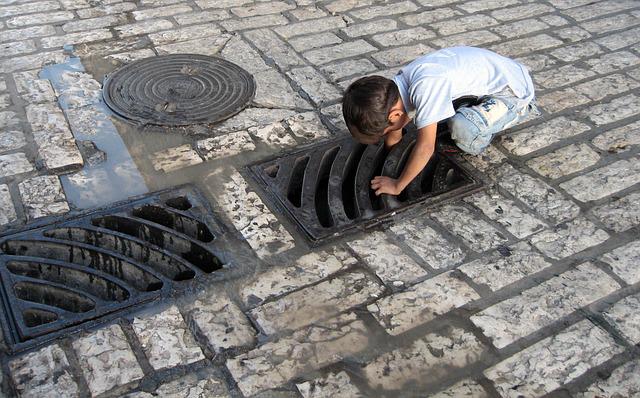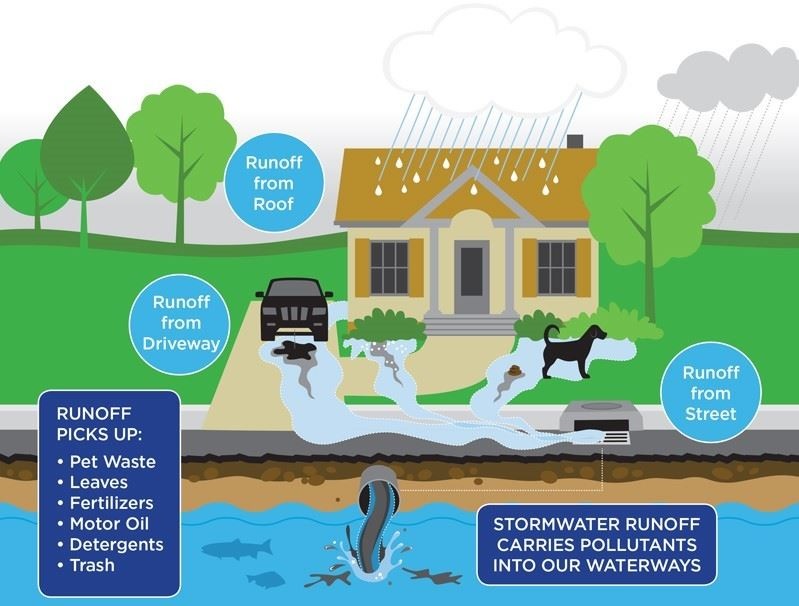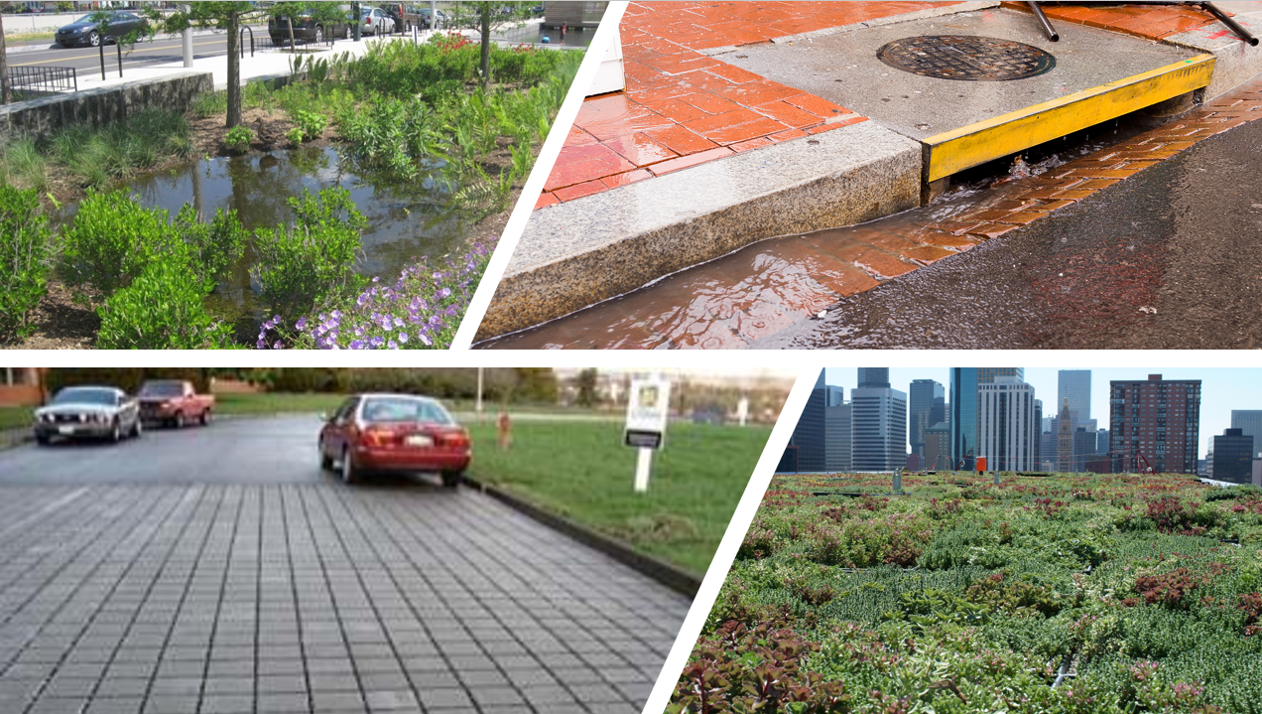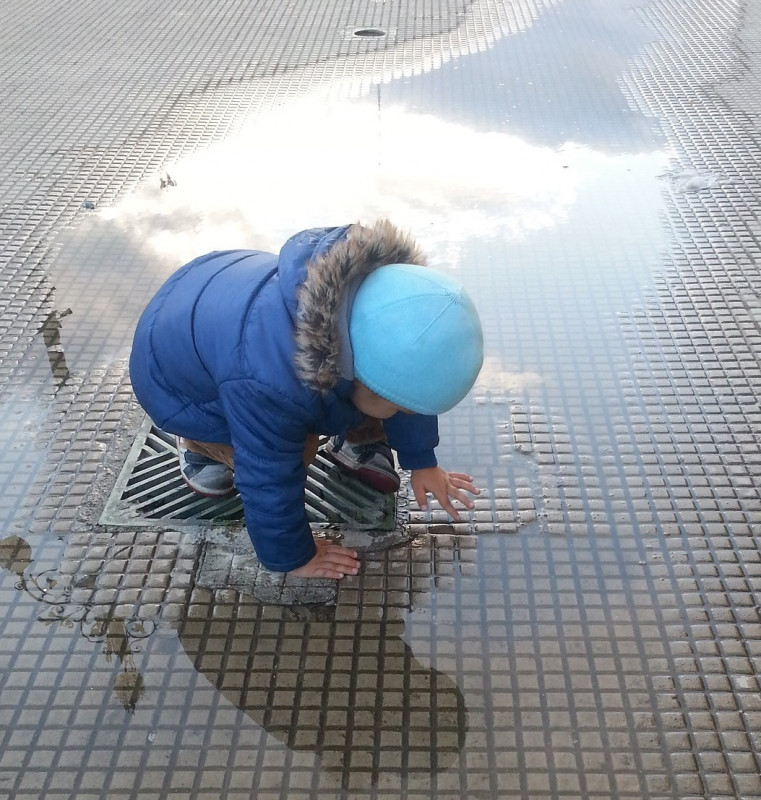 When it’s raining, have you ever thought about how much water falls from the sky? Or where it goes once it lands on the ground?
When it’s raining, have you ever thought about how much water falls from the sky? Or where it goes once it lands on the ground?
Just one inch of rainfall holds a lot of water - if it falls on a football field, that is enough water to fill up a large swimming pool. And most places get lots more than one inch of rain!
Before we had cities and pavement, rain would land on meadows and forests and slowly sink into the ground. The plants, roots, and healthy soil acted like a giant sponge, soaking up rain and slowly filtering it into the ground. This groundwater was a giant reserve of water.
Over time, groundwater would seep up into springs, fill lakes, and flow into creeks and rivers. Rainwater was naturally cleaned through this process.
As people built cities and roads, these new surfaces did not let rainwater soak in. Nowadays, when rain lands on a roof, street, or driveway, it runs off quickly with no chance to seep into the ground. Once rainwater lands on the ground we call it stormwater.
 What is Stormwater Pollution?
What is Stormwater Pollution?
When stormwater flows over cities, roads, and yards, it picks up pollution like trash, dog poop, fertilizers, and oil off the street.
These pollutants wash into nearby waterways, like a creek, river, or ocean. Most cities have storm drains on the street that pipe stormwater directly to a waterway. Stormwater pollution harms aquatic creatures and every year, thousands of people in the US are sickened from swimming in polluted waterways.
Climate change makes stormwater pollution worse due to extreme weather. Heavier rainfall, not only causes flooding but also brings more pollution from the land into the water. Drought creates more stress for aquatic life, making the pollution from stormwater even more damaging.
Stormwater Solutions
 Luckily, there are many ways to turn the stormwater problem into a solution. We can reshape the land to sink stormwater into the ground and can grow beautiful native plants to clean the water and provide homes for pollinators and birds. The land stays more moist as water is stored in the soil, which recharges the groundwater.
Luckily, there are many ways to turn the stormwater problem into a solution. We can reshape the land to sink stormwater into the ground and can grow beautiful native plants to clean the water and provide homes for pollinators and birds. The land stays more moist as water is stored in the soil, which recharges the groundwater.
All over, people are redesigning the landscape to soak up stormwater. Elementary school students in Eaton, Washington installed a rain garden at their school to stop stormwater runoff, grow lovely plants, and protect their local river.
In Los Angeles, California, stormwater is collected from parking lots. Millions of gallons of water are filtered, stored, and later reused to water the landscape. Other solutions for stormwater runoff are a permeable pavement that lets water soak into it or a special roof that has soil and plants to soak up water.
Follow Your Stormwater!
 Next time it rains, go outside and see where water flows off your property.
Next time it rains, go outside and see where water flows off your property.
Maybe from a driveway? Or a downspout off the roof? Can you find places in the yard where rainwater could soak into the ground? Could you extend the downspout from a gutter so it flows onto a planted area instead of onto the hardscape? Or even make a rain garden?
Everyone can help keep pollution out of the water. We can pick up trash and use natural products in our gardens, instead of pesticides or chemical fertilizers. We can take the car to a car wash or wash on top of a lawn instead of over cement.
Let’s work together to keep our cities clean and welcome the rain back into the land!








